I have been looking at solutions for sharing session data between mutliple war files. I came across the following solution http://www.fwd.at/tomcat/sharing-session-data-howto.html
The basic idea of it is that if you have more than one war file, you can set a cookie using the sessionid of the first context that is used.
The cookie can be set using a path that will apply to all contexts/applications.
For example, if I have the following configuration for 3 applications
/myapp/app1
/myapp/app2
/myapp/app3
I can set a cookie as follows
/myapp sessionid.
The sessionid cookie will then be sent to any request with /myapp in the address. This allows the session id to then be used by any of the contexts.
The only problem with this approach is that it was written in 2003 and tested on Tomcat 4.
What are your opinions of this approach? Is there a better way of doing it?
Thanks
